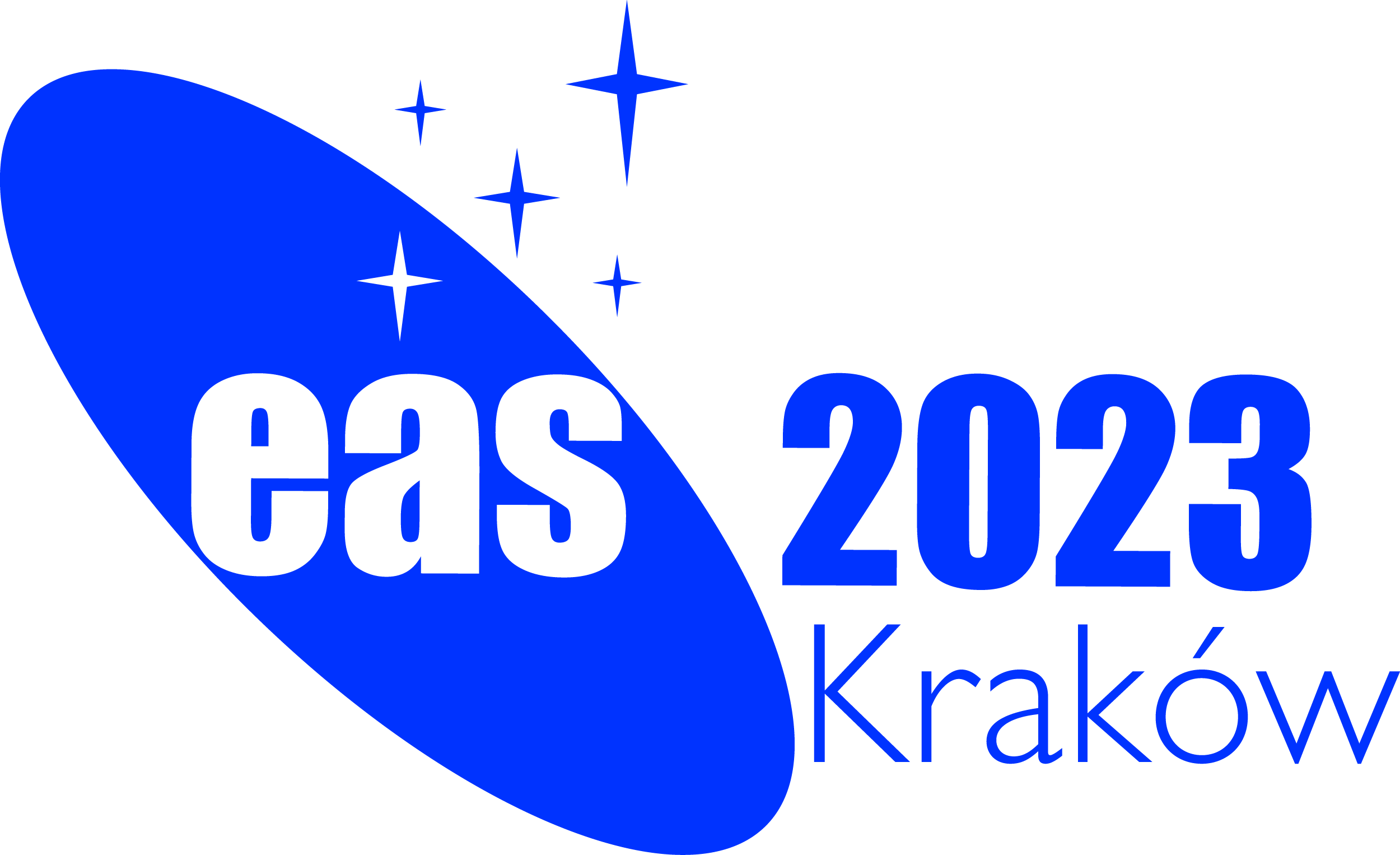Special Session SS8
12 July 2023
Black-hole accretion discs 50 years on: current fortunes and new challenges
News:
The session will consist of 3 review talks, up to ~15 contributed talks and 3 flash-talk sessions for e-posters.
Aims and scope
Accretion discs are the most effective means to convert gravitational potential energy into radiation, and are now commonly accepted as the ultimate engine of active galaxies. This notwithstanding, we are still far from a satisfactory description of the physics of accretion onto compact objects and of its multifaceted manifestations. The geometrically-thin, optically-thick accretion-disc model introduced by Shakura & Sunyaev in 1973 remains the centrepiece of most interpretations, as it surprisingly (if not unreasonably) works fairly well in several respects, although its limitations and physical flaws have been known right from the start. Extensive efforts have been dedicated since in order to, for instance, implement a physical recipe for viscosity, extend to different accretion-rate regimes, and account for the global spectral and timing properties, with observations constantly posing further challenges while theoretical models trailed behind. In the light of the recent progress afforded by both new empirical evidences and numerical simulations, a Symposium specifically focussed on the physics of accretion is therefore very timely, and the EAS 2023 meeting in Krakow is ideally set up to combine the "golden jubilee" of the Shakura-Sunyaev model with a tribute to the highly influential theoretical school of the host country, which has greatly contributed to the development of this field over the last five decades.
The aim of this session is to review the state of the art in our observational and theoretical understanding of the accretion process across the whole range of black-hole mass and Eddington rate, and to discuss the major accomplishments, outstanding questions, and future prospects of this research field. The following are some of the key topics that will be dealt with: theoretical interpretation and modelling of the observed spectral energy distribution and interband continuum lags; nature of the X-ray corona and of the broad line region and their relation with the accretion disc; comparison between the spectral states and evolution of X-ray binaries and active galactic nuclei; outflows, and their link with accretion; insights from polarimetry; transient variability, including tidal disruption events and quasi-periodic oscillations and eruptions; prevalence and driving mechanism(s) of the changing-look AGN phenomenon. This Symposium will represent a unique chance to bring together a large yet loose community of researchers with complementary expertise, thus fostering a fruitful synthesis between different perspectives.
Programme
The program consists of three sections, introduced by one invited review speaker, and broadly covering the following overarching topics:
- Theory & observations of accretion discs
- Spectral diagnostics: lines & continuum
- Transient phenomena & variability
Invited speakers
- Chris Fragile (College of Charleston)
- Chris Done (Durham University)
- Eric Coughlin (Syracuse University)
Scientific organisers
- Beatriz Agís González (Instituto de Astrofísica de Andalucía-CSIC, Spain)
- William Alston (European Space Agency/ESAC)
- Ed Cackett (Wayne State University, USA)
- Jane Dai (The University of Hong Kong, Hong Kong)
- Barbara De Marco (Universitat Politecnica de Catalunya, Spain)
- Ileyk El Mellah (Institut de Planétologie et d'Astrophysique de Grenoble, France, co-chair)
- Margherita Giustini (INTA-CSIC Centro de Astrobiología, Spain)
- Chichuan Jin (National Astronomical Observatories, Chinese Academy of Sciences, China)
- Raphaël Mignon-Risse (AstroParticule & Cosmologie/CNES, France, co-chair)
- Emanuele Nardini (INAF Arcetri Astrophysical Observatory, Italy, co-chair)
- Chris Nixon (University of Leeds, UK)
- Mariko Nomura (National Institute of Technology, Kure College, Japan)
- Pierre-Olivier Petrucci (Institut de Planétologie et d'Astrophysique de Grenoble, France)
- Marzena Śniegowska (Tel Aviv University, Israel)
- Benny Trakhtenbrot (Tel Aviv University, Israel)
- Alexandra Veledina (University of Turku, Finland)
- Natalie Webb (Institut de Recherche en Astrophysique et Planétologie, France)
Contact
r.mignon.risse @ gmail.com; emanuele.nardini @ inaf.it; ileyk.elmellah @ univ-grenoble-alpes.fr
Updated on Thu Mar 02 09:04:58 CET 2023
|

 A power cut will shut down all EAS services on Tuesday, 10 January 2017 starting at 7:30 CET.
A power cut will shut down all EAS services on Tuesday, 10 January 2017 starting at 7:30 CET.


